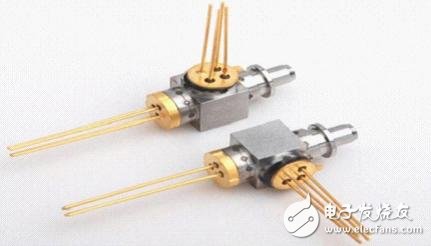Simply put, devices that require an (electrical) source are called active devices, and devices that do not require an (electrical) source are passive devices. Active devices are typically used for signal amplification, conversion, etc., passive components are used for signal transmission, or "signal amplification" by directionality. Capacitance, resistance, and inductance are passive devices, and ICs, modules, etc. are all active devices. (Commonly speaking, it is the active components, such as triodes, that require a power supply to display their characteristics. A passive component can be displayed without the use of a power supply.)
Simple definition of passive componentsIf an electronic component does not have any form of power supply inside it, the device is called a passive device. From the perspective of circuit properties, passive components have two basic characteristics:
(1) Self-consumption of electrical energy, or conversion of electrical energy into other forms of other energy.
(2) Just input the signal and it will work normally without external power supply.

If an electronic component has a power supply inside it, the device is called an active device.
In terms of circuit properties, active devices have two basic features:
(1) It also consumes electricity itself.
(2) In addition to the input signal, there must be an external power supply to work properly.
It can be seen that the active device and the passive device have different working conditions and working modes for the circuit, which must be paid attention to in the learning process of electronic technology.
Common passive electronic devicesPassive devices in electronic systems can be classified into circuit-based devices and connected devices according to the circuit functions they perform.
1, circuit type device(1) diode (diode)
(2) Resistor (resistor)
(3) Resistor network
(4) Capacitor
(5) Inductor
(6) Transformer (transformer)
(7) Relay (relay)
(8) button (key)
(9) buzzer, speaker (speaker)
(10) switch
2, connected devices(1) connector (connector)
(2) socket (shoket)
(3) Connecting cable (line)
(4) Printed circuit board (pcb)
Common active electronic devicesActive devices are the main components of electronic circuits. From physical structure, circuit functions and engineering parameters, active devices can be divided into discrete devices and integrated circuits.
1, discrete devices
(1) Bipolar transistor, generally referred to as triode, bjt
(2) Field effect transistor (field effecTIve transistor)
(3) Thyristor (thyristor), also known as thyristor
(4) Semiconductor resistors and capacitors - resistors and capacitors fabricated using integrated technology for use in integrated circuits.
2, analog integrated circuit devicesAnalog integrated circuit devices are integrated circuit devices used to process analog voltage or current signals that vary continuously over time.
Basic analog integrated circuit devices generally include:
(1) Integrated operational amplifier (operaTIon amplifier), referred to as integrated op amp
(2) Comparator
(3) Logarithmic and exponential amplifiers
(4) Analog multiplier/divider (mulTIplier/divider)
(5) Analog switch circuit (analog switch)
(6) pll circuit (phase lock loop), that is, phase-locked loop circuit
(7) Integrated voltage regulator (voltage regulator)
(8) Reference source
(9) Waveform generator
(10) Power amplifier
Disposable eletronic cigarettes
Disposable Eletronic Cigarettes,Mini Electronic Cigarette,Vape Electric Cigarette,Disposable E-Cigarette,vape pen pods
Shenzhen Aierbaita Technology Co., Ltd. , https://www.aierbaitavape.com